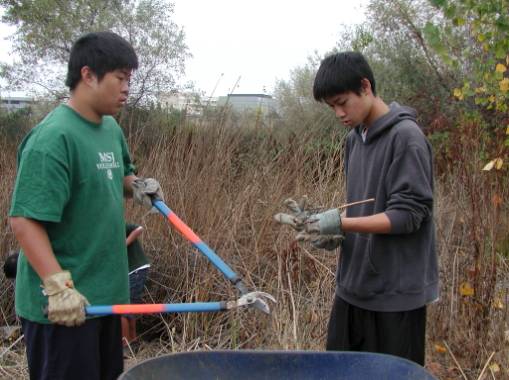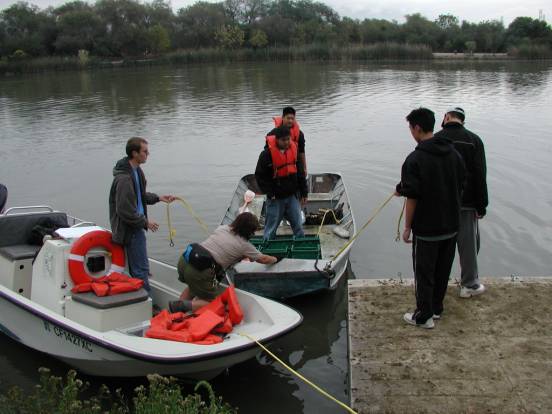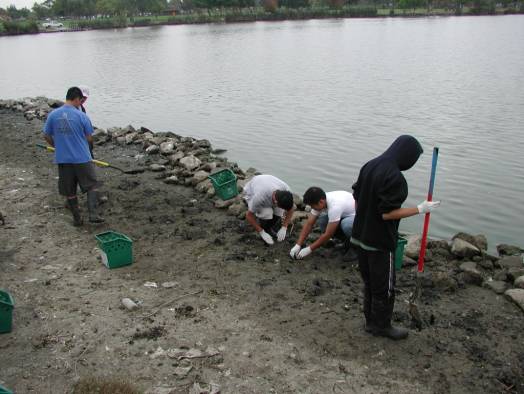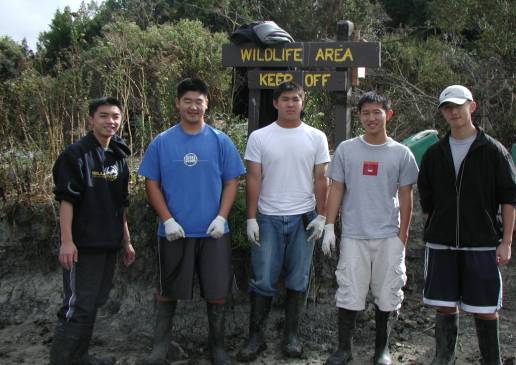Transplanting
Tules from Tule Pond (south) for
Restoration on Duck Island, Lake Elizabeth
by Justin Hsu
Troop 468
The goal of this project is to plant Tule plants along the banks of Duck Island to prevent further erosion to the island. Duck Island is an island located within Lake Elizabeth in the city of Fremont and the only way to access it is by boat. Every year, the island loses more and more land because of erosion. This project addresses that problem with motives to solve the erosion dilemma. The project consists of two stages: growing and planting tules. Tules will be grown in Tule Pond at Tyson Lagoon, (supervised by the Math & Science Nucleus), at least two weeks prior to the date when Lake Elizabeth’s water level is lowered by the City of Fremont. In this small window of opportunity, a small mud bank is revealed by the water and the tules will be planted along the bank. The project was done over a period of at most a month for preparation and the tule planting should be completed in one day. The result of planting the tules will help prevent further erosion to Duck Island.
 |
 |
| Carl Yang and Janren Liu cutting tule roots | Loading Equipment onto Duck Island |
Duck Island provides an excellent environment for local bird populations because the island is isolated from the general public. The island is one of the only nesting grounds for egrets in the area. The Snowy Egret, Great White Egret, Great Blue Heron, Green Heron, Canadian Geese, and Tree Swallows are a few species that nest on Duck Island.
 |
 |
| Digging and Planting rows of tule roots | (From Left to Right) Matt Wong, Johnny Liu, Justin Hsu, Dan Sun, Brian Trang |
Upon completing this project, the tule plants will be allowed to grow along the region on Duck Island. Within a few years, the tules will become lush and abundant and bind the soil of the earth beneath them. This will prevent further erosion to Duck Island. This island, home of many bird populations, will be preserved and surely become healthy once again. This project was a very rewarding experience and will bring the restoration process one step closer to preserving the entire island.